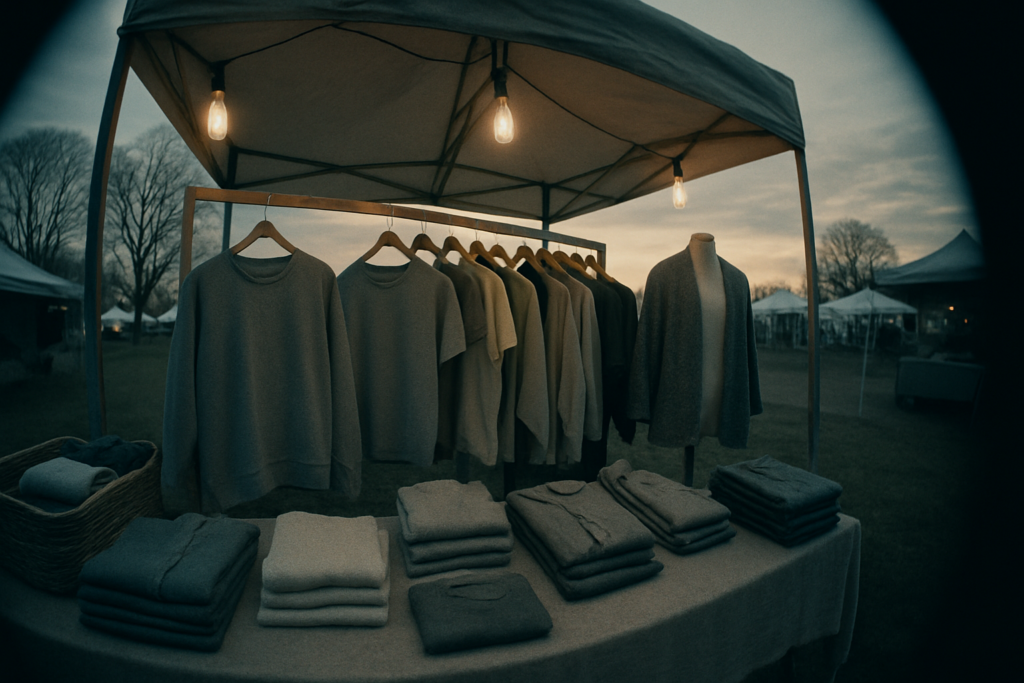Understanding Sustainable Fashion
Sustainable fashion emphasizes eco-friendly practices and ethical standards within the fashion industry. It prioritizes reducing environmental impact and promoting fair labor conditions.
What Is Sustainable Fashion?
Sustainable fashion is a movement that aims to minimize the negative environmental impacts of clothing production. It focuses on using renewable resources, reducing waste, and ensuring products have a long lifespan.
For instance, eco-friendly brands often use organic cotton, recycled fabrics, and low-impact dyes. By creating products that are meant to last longer, the industry reduces the frequency of clothes ending up in landfills.
The Role of Local Artisans
Local artisans play a crucial role in the sustainable fashion movement. They often employ traditional techniques that have minimal environmental impact, using materials sourced responsibly.
Supporting these artisans helps sustain local economies and preserves important cultural practices. Examples include hand-woven textiles, natural dye processes, and upcycled materials.
Investing in their work means promoting unique, high-quality products and contributing to a more sustainable industry.
Spotlight on Local Artisans
Local artisans form the backbone of sustainable fashion. Their skills, traditions, and dedication to responsible sourcing make a significant impact on the industry.
Benefits of Supporting Local Talent
Supporting local artisans offers numerous benefits:
- Economic Growth: Investing in local artisans boosts local economies by creating job opportunities and encouraging enterprise development.
- Cultural Preservation: Artisans protect cultural heritage by using traditional techniques, such as hand-weaving and natural dyeing. These practices preserve historical methods that might otherwise fade away.
- Unique Products: Handcrafted items stand out for their uniqueness and high quality, setting them apart from mass-produced goods. Examples include bespoke clothing and accessories.
- Environmental Impact: Artisans often utilize eco-friendly materials like recycled fabrics and sustainably sourced fibers, reducing environmental harm.
- Market Reach: Artisans struggle to access broader markets due to limited resources for marketing and distribution.
- Competition: They face competition from mass-produced, lower-cost goods, making it difficult to compete on price.
- Resource Availability: Sourcing sustainable materials can be challenging due to higher costs and limited supply.
- Financial Stability: Inconsistent demand and seasonal sales cycles create financial instability for many artisans.
Impacts of Supporting Local Artisans

Supporting local artisans in sustainable fashion has far-reaching effects. These impacts touch upon economic, environmental, and community aspects.
Economic Benefits
Backing local artisans bolsters community economies. When consumers purchase products from local makers, money circulates within the community, creating jobs and fostering economic growth.
According to the American Independent Business Alliance, local businesses return an average of 48% of their revenue to the local economy, compared to 14% for chain retailers.
This revenue supports local suppliers and services, ensuring a robust, interconnected economic network.
Local artisans often produce limited-edition items, attracting customers seeking unique products. These exclusive items often command higher prices, which directly benefits the artisans.
Profits remain local, empowering artisans to invest in their businesses and communities, leading to increased economic stability.
Environmental Benefits
Supporting local artisans contributes to environmental sustainability. Artisans typically use eco-friendly materials and practices, reducing the carbon footprint of their creations.
According to the Sustainable Apparel Coalition, handcrafted items often involve less energy-intensive processes compared to mass-produced goods.
Locally-made fashion reduces transportation emissions as products don’t travel long distances. For instance, a study by Carnegie Mellon University found that locally sourced goods could reduce carbon emissions by up to 50%.
Artisans often prioritize sustainable sourcing, using recycled or locally-grown materials. This emphasis on sustainability mitigates pollution and resource depletion, fostering a healthier environment.
How to Support Sustainable Fashion Communities
Supporting sustainable fashion communities involves conscious decisions that foster growth and sustainability within local artisan sectors. Here’s how anyone can contribute effectively:
Buying Local: More Than a Trend
Purchasing from local artisans stands as more than a fashionable choice; it’s a commitment to sustainability. When buying local products, consumers directly invest in local economies, preserving traditional skills and practices.
Artisans, such as weavers and tailors, often use eco-friendly materials, lowering carbon footprints. Buying handmade garments, for example, ensures unique products while promoting minimal waste practices.
Advocacy and Awareness
Raising awareness about sustainable fashion amplifies its impact. Share information on social media, write reviews, and participate in online forums. I attend local craft fairs and showcase these artisans’ work to my network.
Advocacy efforts can include writing to local representatives about the importance of funding for artisan communities and supporting educational programs on sustainable practices.
Through active involvement, everyone can contribute to a thriving, sustainable fashion ecosystem.


 is a committed writer and environmental advocate at Eco Elegance Technique, specializing in sustainable practices, health, and wellness. With a background in environmental studies, Peter focuses on providing readers with practical advice on integrating eco-friendly habits into their daily routines. His work aims to inspire a deeper connection between personal well-being and environmental responsibility, making sustainability accessible and actionable for everyone.
is a committed writer and environmental advocate at Eco Elegance Technique, specializing in sustainable practices, health, and wellness. With a background in environmental studies, Peter focuses on providing readers with practical advice on integrating eco-friendly habits into their daily routines. His work aims to inspire a deeper connection between personal well-being and environmental responsibility, making sustainability accessible and actionable for everyone.
